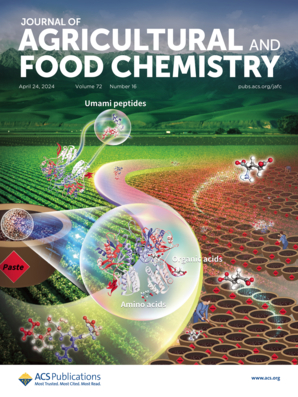谷物来源的蛋白质和多肽对血糖水平的影响
IF 6.2
1区 农林科学
Q1 AGRICULTURE, MULTIDISCIPLINARY
引用次数: 0
摘要
一些谷物蛋白及其消化肽显示出调节血糖水平的潜力,这对糖尿病及其并发症的管理很重要。普通谷物(如小麦和荞麦)和豆类(如芸豆和大豆)中的蛋白质含有蛋白质α-淀粉酶抑制剂(α-AIs),可抑制淀粉分解为还原糖,从而减轻餐后血糖峰值。不消化谷物蛋白的功能与膳食纤维类似,通过吸附葡萄糖,促进其排泄和稳定血糖水平。此外,这些蛋白衍生的肽可以抑制肠道中葡萄糖转运蛋白的表达,从而减少葡萄糖的吸收。它们还通过抑制二肽基肽酶- iv (DPP-IV)来促进胰岛素分泌,DPP-IV是一种分解肠促胰岛素激素的酶。总的来说,这些特性突出了谷类蛋白和多肽在功能食品中血糖管理的潜力。本文章由计算机程序翻译,如有差异,请以英文原文为准。

Effects of Cereal-Derived Proteins and Peptides on Blood Glucose Levels
Some cereal proteins and their digestive peptides exhibit the potential to regulate blood glucose levels, which is important for the management of diabetes and its complications. Proteins in common grains, such as wheat and buckwheat, and in legumes, such as kidney beans and soybeans, contain proteinaceous α-amylase inhibitors (α-AIs) that inhibit the breakdown of starch into reducing sugars, thereby mitigating postprandial glucose spikes. Indigestible cereal proteins function similarly to dietary fibers by adsorbing glucose and facilitating its excretion and stabilizing blood glucose levels. Moreover, peptides derived from these proteins can suppress glucose transporter expression in the intestine, thereby reducing glucose absorption. They also promote insulin secretion by inhibiting dipeptidyl peptidase-IV (DPP-IV), an enzyme that breaks down incretin hormones. Collectively, these properties highlight the potential of cereal proteins and peptides in functional foods for blood glucose management.
求助全文
通过发布文献求助,成功后即可免费获取论文全文。
去求助
来源期刊
CiteScore
9.90
自引率
8.20%
发文量
1375
审稿时长
2.3 months
期刊介绍:
The Journal of Agricultural and Food Chemistry publishes high-quality, cutting edge original research representing complete studies and research advances dealing with the chemistry and biochemistry of agriculture and food. The Journal also encourages papers with chemistry and/or biochemistry as a major component combined with biological/sensory/nutritional/toxicological evaluation related to agriculture and/or food.

 求助内容:
求助内容: 应助结果提醒方式:
应助结果提醒方式:


